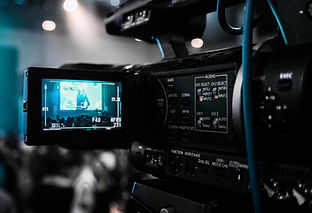
Media collage
 |  |  |  |  |
|---|---|---|---|---|
 |  |  |  |  |
 |  |  |
Genre fact file-
POSTER ANALYSIS


What is a genre?
A genre is a specific type of music, film, or writing for e.g.
-
Drama
-
Action and Adventure
-
Romance
-
Mystery
-
Horror
-
comedy
-
reality TV
What media language do you use to analyse genre?
Why we analyse these things?
-
Different media texts have codes and conventions that define their genre and set up audience expectations
-
The narrative
-
Settings and iconography
-
Mise-en-scène
-
Visuals- lighting, camera angles, how the pictures are edited together. Describe any people-- what do they look like? what are they doing? wearing?
-
Sounds- Who says them? What kind of music is used? Does it change in the course of the commercial? How? Are there other sounds? What is their purpose? Who is being spoken to-- direct address or indirectly?
Low Angle Shots
-make the subject look more powerful and, even intimidating to the audience; these shots are often used in action-adventure films to make the character seem invincible.
Camera pan
-A pan camera movement across the screen horizontally shows more of the landscape in which the action is taking place.
-A fast pan, called a whip pan, is used to suggest panic and thrills. These are often used in horror and action-adventure films.
Facial expressions
-We analyse these things like facial expressions e.g. fully raised eyebrows often indicate disbelief
-they communicate the emotional state of a character can tip us off about the genre.
Colour is also used to indicate genre. In post-production, an editor might drain some of the colour to make the image seem older if it is a period drama, or bright colours might be enhanced in a superhero film to emphasise its comic book origins
Red- love, energy, sale, passion, anger, hunger, power
Black- Bold, power, mystery, elegance, evil, dramatic, death, classy, formality
White-goodness, innocence, purity, fresh, easy, clean
Blue- trust, smart, calm, faith, natural, stable, power, loyalty, fear, masculinity
Orange- health, attraction, wealth, youth, happiness, courage, confidence, ignorance
Yellow- attention, childish, warmth, energy, optimism, unstable
Green- soothing, eco-friendly, natural, envy, jealousy, balance, restful, money, guilt, healing
Purple- royal, mysterious, arrogant, luxury, childish, creative, luxury, nobility
Narrative theories
The purpose of narrative theories is to give it a better easier to follow the narrative and make it more interesting
The five stages of Todorov's narrative theory
Equilibrium- where everything is in a normal state and there is no problem
Disruption- A disruption of that order by an event
Recognition- where the disruption has been acknowledged as a problem
Attempt to repair- the highest point in tension / where steps are taken towards fixing the problem
New equilibrium- all matters sorted out/ problem solved and questions answered
Vladimir props character theory
The villain- struggles against the hero usually with some sort of background scarring
usually, wear dark and mysterious colours, and not very attractive this is to juxtapose between the hero and the hero and the villain to hight their differences
The dispatcher- invites the hero to eliminate the evil
The helper- helps the hero fight against evil
Princess/ prize- the hero earns the prize throughout the story but is unable to win it due to the villain until the end when the hero wins
The donor- prepares the hero/gives the hero an abject to help defeat the villain
The hero- the most common character type/ solves the problem/ defeats the villain and wins the prize
False hero- will try to steal the Hero's thunder, grabbing the credit and perhaps trying to marry the princess instead
Levi Strauss binary opposites
A pair of related terms or concepts that are in meaning
Examples of Levi Strauss binary opposites -
Good vs bad e.g black panther
Man vs nature e.g Touching the Void
Young vs old e.g an inspector calls
Rich vs poor e.g an inspector calls

Narrative analysis
'What happened to Monday' is a film where they live in a world where families are limited to one child due to overpopulation, a set of identical septuplets must avoid being put to a long sleep by the government and one of the siblings (Monday) goes missing so they go searching for her sister whilst fighting off the government.
The narrative theory -
In this film Todorov's theory was used where the Equilibrium is when all seven sisters are surviving in a one-child policy rule world, the disruption is when one of the sisters go missing and the others try to find her but some get caught and some unfortunately die, The recognition is when they find one of there sister's and try to escape, (Attempt to repair) then the first sister who went missing reveals that she's alive and sold them all out and one of the other sisters expose what the government as they've been killing have been all the siblings in the world and finally the New equilibrium is that the one-child law policy was removed.
Moana is about an adventurous teenager sails out on a mission to save her people. During her journey, Moana meets a demigod Maui, who helps her in her quest to make Maui return a stone he stole which affects the whole island. Together they sail across the ocean encountering enormous monsters. Along the way, Moana finds the one thing she always she wasn't sure of; her own identity and her ancestry.
The narrative theory -
Moana is an independent female that sets out on a mission for herself., stereotypically in Disney movies the females are the ones in distress. However, in Moana, she sets out and acts like The princess she needs to find Maui for him to save the island but the eventually ends up being The hero and her returning then stone. In Propps’s Character theory Maui is The helper as he goes on the mission with Moana, he is also The dispatcher as he sends Moana on the mission by stealing the stone in the first place. The ocean also plays the dispatcher as it specifically chooses Moana to restore the stone and Moana’s grandmother acts as The donor by giving her the stone.

GENRE PITCH PRESENTATION
What is a Log-line?
see definition>

A brief summary that tells us the main conflict of the story, often providing an emotional 'hook' to stimulate interest for the audience
What's a DARTS
activity
see definition

When making a film, you need to pitch your idea to a production company in order to secure funding for your film
What does DART stand for?
see acronym >

DIRECT
ACTIVITY
RELATED
TO TEXTS
DARTS activity's could be...
-
Research audience
-
Target audience
-
Compare to films that are similar
-
follow up producera policies
-
exciting and enthusiastic in your pitch
Intertextuality
When a text references another text
For example;
Shrek has loads of other fairytales & Pinnochio, 3
little pigs, little red riding hood &gingerbread man

FORMAL PITCH AND CHARACTER PROFILES
Title: Missing
Genre: Thriller, romance
Budget: 5 million
Audience: My target audience will be a slightly younger audience, predominantly under 25s. It is said that roughly 42% of horror audiences are women, with 58% being men. Horror films tend to intertwine with thrillers in the way that viewers seek out a certain thrill/scare by diving into a world which isn’t their own. Younger audiences tend to be more prone to seeking out this feeling, hence why horrors don’t necessarily appeal to elders.
The general intention of our horror film is for the audience to feel scared and feel a sense of panic.
Narrative: Our narrative is about the character Jason that becomes overly obsessive around a couple. The two lovebirds Mark and Chloe have shared memories for over 4 years and are living there best life until Jason causes problems between them making Chloe anxious and worrying about their relationship. After Mark makes a call to Chris about all the absurd things going on they then realize something strange is going on, like stuff from their apartment is going missing and that someone is sending Chloe messages from Mark’s phone when his phone is right next to her. Later on, Jason realizes he’s messed up his plan and decides to kidnap Mark, leaving Chloe worried and endangered.
Story boarding

Camera shots and angles
Close up shot (CU):
-
A camera shot of a character from head to shoulders
-
The shot that focuses heavily on the face/object usually blurring out the background to set a deeper focus
-
Its used to emphasise how important a character is
-
It also allows the audience to build a relationship with the character
High angle shot (HA):
-
The camera would be positioned above the character or place
-
It can make a character look vulnerable
-
It's also designed to make the audience root and cheer for the characters in the shot
Extreme close up shot (ECU):
-
The camera will be extra zoomed into the characters face and will usually focus on the eyes or mouth
-
It's used to convey emotion to the audience
-
is also used to show the importance of the situation and character
Medium shot(M):
-
A camera shot from the waist up
-
This shot is used to show the characters body language, movements & gestures
Establishing shot(E)/ Longshot (L):
-
The camera shows the whole characters body including the setting
-
This shot is used to set the location or relationships of the characters
-
Is often used as the first shot on a start of a scene
-
Low angle shot(LA):
-
When the camera is positioned below the character or place
-
The angle can make someone look powerful and important
Point of view (P.O.V):
-
Is an angle that shows what a character is looking at is looking at (represented through the camera)
-
It is usually established by being positioned between a shot of a character looking at something, and a shot showing the character's reaction (shot-reverse shot)
Eye level
Where the camera focuses on a character from the waist upwards
The characters and the background has little detail, very minimal and usually blurry
Over the shoulder shot
This camera shot is used to show the perspective of a character as if they are being watched or followed by somebody
The purpose of this type shot is used to engage the audience as of they are in the presence of the character
Birds-eye view
-
This angle shows a 'summary' of a scene
-
Taken in the view high above ground level so people and objects look smaller than they actually are
-
it's a good way to show an overall perspective of a scene and is typically used in action film when a new location is introduced









What is a story outline? -
The step outline is the scene by scene (step by step) account of what happens in the story. Like a textual storyboard, the step outline presents the narrative in its entirety – without actually being the narrative. It is a complete report in that it describes every plot event.
6 Key elements of a screenplay
1. Scene/Heading-
Tells the reader where the scene takes place
2. Action-
The action that is happening in real time
3. Character name-
The character between characters before what they say
4. Dialogue-
A conversation between characters or the speech
5. Parentitithetical -
Provides more information about how characters say or do something
6. Extensions
Notes about the character, often how their voices will be heard or strong personality traits that show
To write a script:
You use the screenplay code (E.g ENT, INT)
Make sure it's formatted correctly
Show narrative
Font and size should be 12 and courier
Creating a storyboard for my film
Pre-production-
-
Storyboard
-
Shot list
-
Location reece
-
assessment
Analysing camera shots & angles
within 'A quiet place'

Extra research




This would have been our shot list but due to certain circumstances we have had to change the trailer to a scene, therefore, there is going to be two different shot lists and a storyboard an old one for the trailer and a new one for the scene
STORYBOARD
SCRIPT
RISK ASSESMENT
&
LOCATION REECE

SHOT LIST - TRAILER
SHOT LIST - SCENE
LO: Peer assesses each other's rough cut against success criteria we have made together
PASS
-Clear narrative
-Basic camera shots used
-Relates to a specific genre
-Iconography is obvious (setting, characters, costume, lighting, props)
-Sound is audible
-Camera is stable
-Using soundtrack/ applying sound effects
-Bare minimum 3-5 minutes of footage
-Iconography e.g stalker/thriller- shots, camera movement, props, characters, costumes, sound and effects
MERIT
-Interesting way of telling a narrative and flows smoothly
-Variety of camera shots
-Interesting camera shots (different perspectives P.O.V, CU, ECU, over the shoulder shots)
-Sophisticated use of editing
-Applying filters – relates to the genre (e.g. Dark tone = horror)
-Obvious iconography (costumes, hair and makeup, use of setting, props, lighting)
-Diegetic/ non-diegetic sound is clearly thought about and has a purpose
-Shots need to be stable - not shaky
-Clear sound
-Texts messages need to be clear
-Clear codes & conventions
DISTINCTION
-‘Industry standard’
-Creative and original way of telling a narrative
-Variety and interesting use of camera shots
-Editing is flawless–runs smoothly, shots aren’t too long, colouring is precise
-Iconography is clear and creatively done
-Use of diegetic/ non-diegetic sound is creative, embedded well into your work and has a purpose
EVALUATION:
In regards to your film, answer the following questions:
Did you achieve what you had planned in your Pre-production? (If not, why not? If so, how so?)
What would you do differently if you were to make the film again?
If we was to redo the filming i would bring more camera eqiupment
What practical actions could you do to improve your current short film?
What new skills have you learnt and what areas do you need to develop on?
Did you achieve what you had planned in your pre-production?
Not completely, but in the end we did as we changed our original project called Ignorance, to 'Missing' , and which meant we also changed its genre and narrative , but in the end we achieved everything.
what would you do differently if you were to make the film again?
I would make sure I've planned it properly and to stick to the original version as we changed it a lot , so we had to do extra work . I would also make sure that all the equipment is booked a couple days before we film so we don't have to stress about equipment and to ensure our actors are free for those hours.
what practical actions could you do to improve your current short film ?
what new skills have you learnt and what areas do you need to develop?
I have learnt how to use the camera properly, I also know all the shots that camera men would take for shooting films and the reasons why ; for example they would take a CU to make the audience focus on the subject they want, or a establishing shot to show the surroundings. I've also learnt all the different lighting used and why, e.g. you would use low key lighting to create a shadowy effect. As there we're only two cameras Chloe and Shanei done most of the shoots but I would say have extra understanding of this unit.








MEDIA UNIT 1-SHORT FILM













